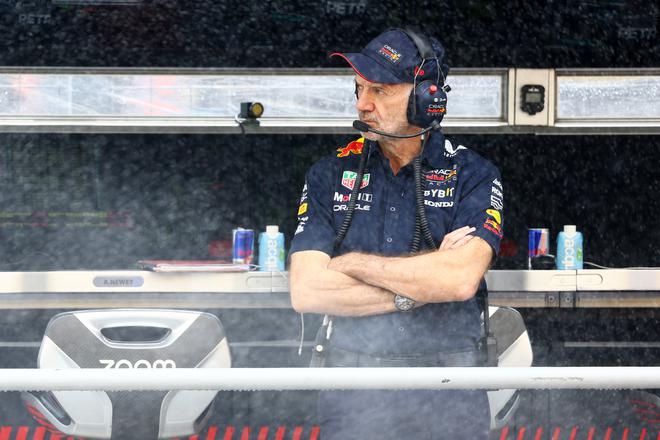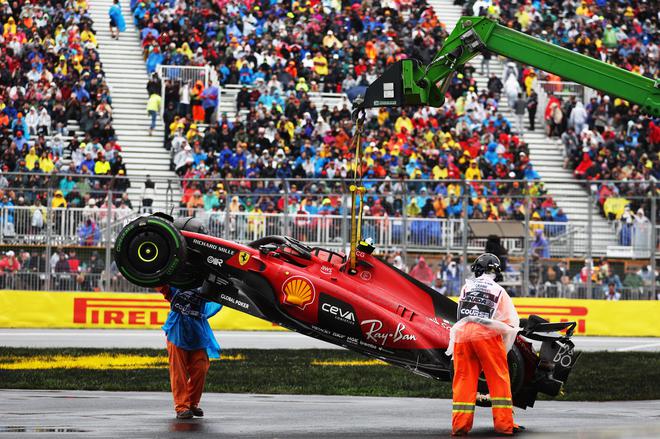This year’s Formula One mid-season report can be summed up in a few ways.
The most obvious is that Max Verstappen will win his third straight world title, joining a select group of drivers to have achieved this and securing his place among the sport’s greats.
Verstappen and Red Bull have dominated the first half, with the reigning drivers’ champion claiming 10 of the 12 races and finishing second twice. Red Bull is yet to lose; Sergio Perez has taken the other two wins. As outlandish as this sounds, the team, in its current form, could win the remaining 10 races unless it implodes through driver errors or reliability issues.
However, another view is that Red Bull’s competitors have capitulated, making it easy for the energy drink giant to run away with it.
Cracking a regime change
After the introduction of new aero regulations last year, Red Bull — guided by its resident genius, arguably the most successful F1 car designer ever, Adrian Newey — has been the standout team. Getting the initial concept right is the key to cracking a big rules shake-up. This sets the foundation on which performance can be added. Typically, the second year of new regimes sees teams close the gap as they understand the car better and converge towards similar concepts.
Unfortunately for the sport, Red Bull’s main rivals with deep pockets — Mercedes, Ferrari, and in the next tier, Alpine (owned by the Renault Group) and McLaren — have failed to nail the new regulations and are on the back foot.
To make things worse, not only have these teams been left behind technically, but they have also had to deal with organisational issues that have compounded their woes. Some of these teams have been putting out fires inside their factories, allowing Red Bull to coast to both titles.

A vital ingredient of success, especially in team sport, is a certain sense of stability. It could be the stability of the principal actors, such as the athletes and support staff, or of the vision, which in F1 is best expressed through the car concept. You seldom have one without the other.
Nothing good ever comes from constantly tinkering with the personnel in a team setting, where it often takes time for all the characters to sing from the same hymn sheet.
F1 cars are long gestational projects. Work for the new season starts months ahead. So, it’s paramount that the top management is stable through this period.
While Newey’s greatness is undeniable — he has steered three teams (Williams, McLaren and Red Bull) to glory — Red Bull has found a way to extract his best. It allows him his space without too much interference and team principal Christian Horner shields the race crew from the owners. This stability at the top level, with Newey acting as the guiding force under whom many talented engineers work, has delivered tremendous success.
Stark disparity
Ferrari is a study in contrast. Last year, the Italian marque initially seemed to have a winning car that allowed Charles Leclerc to stay in the hunt. But Ferrari’s concept did not have a high ceiling. It also couldn’t keep up with Red Bull’s relentless development. Moreover, the team wasn’t sharp operationally, fumbling race wins because of poor strategic calls. As a result, its campaign fizzled out.
The team returned to its ‘football manager mentality’, firing team principal Mattia Binotto. He was the fourth team principal to have been sacked over the last 10 years. Along with Binotto, there has been an exodus of engineers from Maranello. Instead of empowering him to sharpen the race operations, the team appears to have thrown the baby out with the bathwater.
When Binotto took over as technical director in 2017, there was a cultural shift in Ferrari for the better. The team developed innovative designs in 2017 and 2022 — years in which significant changes in aero regulations were introduced.

Aerodynamics had been Ferrari’s weakness for a long time, and under Binotto, the team seemed to be getting braver without the fear of failure. Even in 2022, Ferrari charted a unique design concept that proved successful at the start before the returns diminished. It remains to be seen whether the team maintains that creative spirit under new leader Frederic Vasseur.
Mercedes, too, has had its recent share of organisational challenges. The team once set the benchmark for efficiency: with a no-blame culture, it effectively handled the transition of the senior technical leadership from Ross Brawn to Paddy Lowe to James Allison, as it steamrolled the opposition to win eight constructors’ and seven drivers’ titles between 2014 and 2021.
However, last year the team arrived with a flawed size-zero sidepod concept and has been playing catch-up ever since. It took a year to solve the problem of the car bouncing uncontrollably on the straights. It also couldn’t add performance at the rate needed to challenge Red Bull.
Internally, the team had to reorganise, with Allison, who took on a less hands-on role as chief technical officer, returning as the technical director. He swapped positions with Mike Elliott, who was in charge of the design for the 2022 and 2023 cars. The team plans to abandon its 2022 concept, which could mean more chances to trip up on a new path.
Further behind Mercedes and Ferrari, things are equally grim at McLaren and Alpine.
Wholesale changes
Before the Belgian GP, Alpine decided in one swoop to shove out the senior management. The team finished fourth last year and has ambitions of moving up the grid. But after a poor start to the season — it languishes in sixth — the boardroom removed team principal Otmar Szafnauer, who was in the job for just over 18 months, and sporting director Alan Permane, who had been with the Enstone-based team for more than three decades, among others.
At McLaren, the team realised early last year that it had made a costly error with its design and started 2023 with one of the slowest cars on the grid, which eventually cost technical director James Key his job. While the new technical leadership has done its best to get the team back on track, the rejig has delayed the efforts to be consistently at the sharp end of the grid.
Not only have rivals allowed Red Bull to disappear out of sight in 2023, they have also afforded the reigning champion more time to work on next year’s car — a crucial head start.
Now all eyes will be on whether these changes at some of F1’s top teams bear fruit soon enough to make the 2024 season closely fought. F1’s long-term future depends on the teams being evenly matched. Without that, the commendable work done to make the sport financially sustainable and the racing closer will have been in vain.







